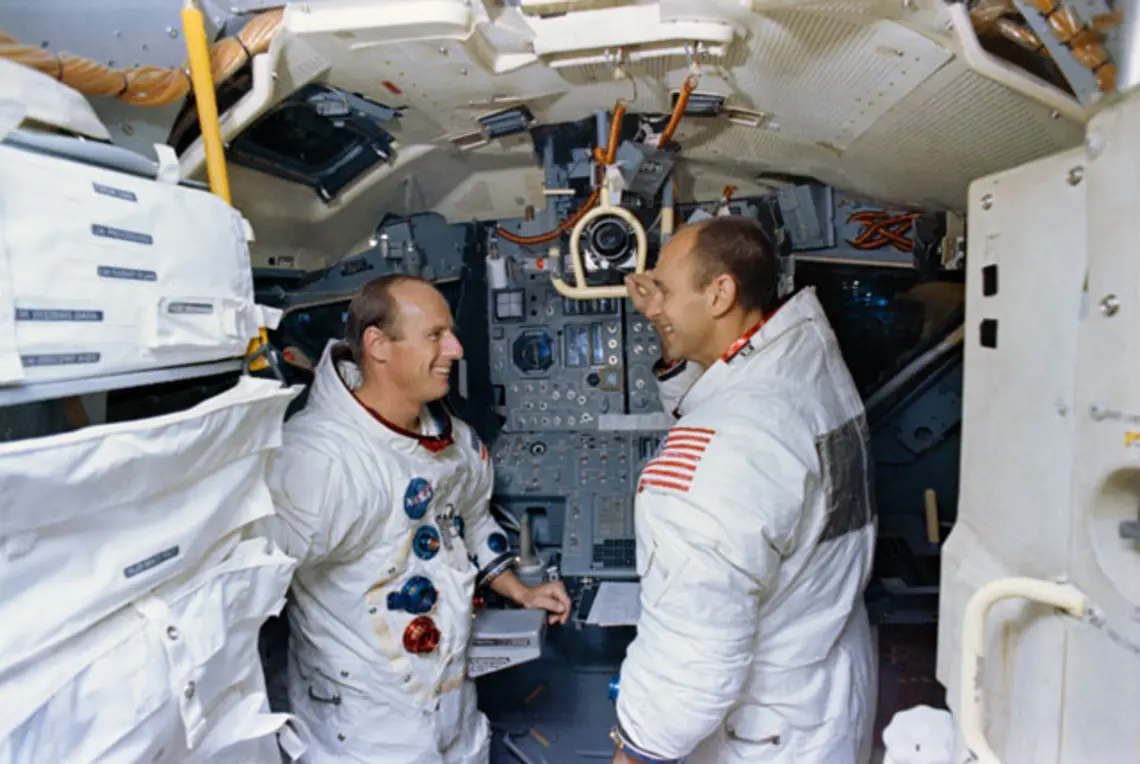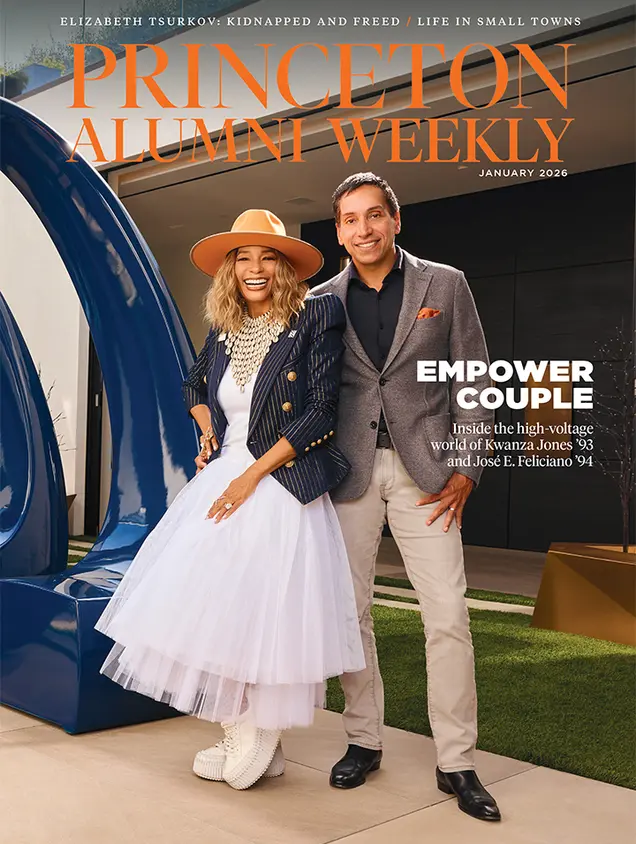
Road Trip: A Virtual Tour of Museums Linked to Princetonians
Rally ’Round the Cannon Podcast
Inspired by Julian McPhillips ’68’s Fitzgerald Museum in Montgomery, Ala., we take a virtual tour around the United States, stopping in at museums, memorials, and historical sites linked to Princetonians.
The Rally ’Round the Cannon podcast is also available on iTunes — click here to subscribe
TRANSCRIPT:
BT: I’m Brett Tomlinson, the digital editor of the Princeton Alumni Weekly.
GL: And I’m Gregg Lange of the Great Class of 1970, who should know better.
BT: And welcome to the Rally ’Round the Cannon Podcast, a podcast about Princeton history and the people behind it. In the March 16 issue of PAW, we have a story about the Scott and Zelda Fitzgerald Museum in Montgomery, Ala., created by alumnus Julian McPhillips ’68 in a home where F. Scott Fitzgerald and his wife once lived – Montgomery is Zelda’s hometown. This got me thinking about other museums and memorials or historical sites linked to Princetonians, so I put together a sort of virtual tour around the U.S. Now, I’m going to pass over the obvious ones – Montpelier, James Madison’s home in Virgina, and the Woodrow Wilson Presidential Library and Museum, also in Virginia, not too far from that – and I’m going to try for some places off the beaten path.
For the listener, Gregg is coming to this cold, but I thought it could be fun to test his knowledge – or his intuition. Gregg, are you ready for a road trip?
GL: Me and Google Maps are all set.
BT: OK, so as I mentioned, the idea came from the Fitzgerald Museum in Alabama, so I’m starting there, and from there we’ll head west to Houston, Texas. Gregg, what comes to mind when you think of Houston?
GL: Actually, my two classmates, Jim Rice and Jim Tang, who are known as the NASA menu, Rice and Tang. Houston? I’m blanking on that one.
BT: Well, NASA – you’re not too far off. It’s also home to the Johnson Space Center, and at the Johnson Space Center, they have an Astronaut Memorial Grove, with a tree for every NASA astronaut who has passed away. At Christmastime, they put lights on every tree, and one tree gets special treatment – red lights instead of white ones. Gregg, any idea why?
GL: Red lights?
BT: The color’s not really significant, but the fact that it’s a different color.
GL: Oh, OK. Neil Armstrong’s maybe? Or John Glenn.
BT: No, the lights honor Pete Conrad ’53, who was considered the most colorful of the early astronauts. In fact, his credo was, “If you can’t be good, be colorful.” So that is their annual tribute around Christmastime – the Pete Conrad tree gets red lights.
GL: That is – never knew that one. Good for you, big guy. If you watch The Right Stuff, that comes up as well.
BT: And if you haven’t read the book – I know we’re always giving reading recommendations – I came to the book after the film, and the book is fantastic as well.
GL: Absolutely true.
BT: OK, moving farther west, our next stop is Victor, Colo. Does that ring a bell?
GL: I don’t know, is that Mt. Princeton?
BT: No, Victor is an old mining town—
GL: Are there any new mining towns?
BT: I suppose there are somewhere, maybe not in Colorado. Victor is home to the Victor Lowell Thomas Museum, which features both gold-mining memorabilia and artifacts related to Lowell Thomas *1916, the journalist and world traveler who grew up in Victor. Doesn’t look like a very large Lowell Thomas collection, but I stumbled upon it and it’s kind of interesting.
GL: That’s a great one. I guess I’m in a movie frame of mind today: That also brings up Lawrence of Arabia, with a fictionalized version of Lowell Thomas as a correspondent traipsing across the desert, following Peter O’Toole. Another great one to watch. Plus, reading anything [Thomas] ever wrote – a very fine writer, and of course one of the very first radio correspondents of any sort and a war correspondent at various times. Great journalist, and still very well remembered in the business.
BT: He was editing the newspaper there in Victor at age 19, eventually ended up at Princeton and taught at Princeton briefly after his graduate study and moved on to exploring the world. Glad I could stump you on a couple because they get a little easier from here.
GL: My excuse is you picked people much older than I am. That’s my salvation.
BT: Well people who are younger than you don’t have museums yet.
GL: We’re getting there fast!
BT: OK, next stop is Libertyville, Ill. Thoughts?
GL: Adlai Stevenson.
BT: Very good. Yes, the Adali Stevenson Historic Home – which is on the National Register of Historic Places. There are a handful of homes associated with Stevenson’s name, in fact, including his boyhood home in Bloomington, Ill., and his birthplace in Los Angeles. But the one in Libertyville seems to be the one to see if you’re interested in Stevenson and his legacy.
GL: We don’t want my parents, who are both alumni of the University of Illinois just down the road in Urbana Champaign, to rise from the dead and smite me, so I had to get that one right.
BT: So as we work our way back east, and after leaving Illinois, I was going to say you can check out the 14 Princetonians enshrined in the College Football Hall of Fame in South Bend, Ind. – that’s not true anymore, apparently they’ve moved the museum down to Atlanta. So you can’t go there, but you can check in on two alumni in another Hall of Fame in Pickerington, Ohio. Any guesses?
GL: Pickerington? I’ll tell you what, Ohio is a crazy enough place – they’ve probably got a high-school football hall of fame, in which case Dick Kazmaier ’52 would be one of the first people in it, but who knows what else might be in Pickerington. The mind boggles.
BT: That’s an interesting guess. Certainly if that does exist, you’re right, Dick Kazmaier would be in it. No, actually it’s the AMA Motorcycle Hall of Fame and Museum, and the alumni members are Malcolm Forbes ’41, who was a devoted motorcycle enthusiast in the 60s, 70s, and 80s; and Cook Neilson ’67, a motorcycle racer and motorcycle journalist.
GL: And they say we don’t get around. The films – I have no idea if they’re on YouTube, but you can dig around the Web — the various film clips of Malcolm Forbes in his leather, zooming around on various Harleys and even more exotic machines have to be seen to be believed. A very interesting and totally irrepressible human being. It shouldn’t surprise me, let’s put it that way.
BT: OK, we’re almost home. Next one is a real softball: When I say Indiana, Pa., what comes to mind?
GL: Ah yes. Not the states bracketing Ohio in this case: Indiana, Pa., is a county seat, which is actually kind of important from the point of view of the library, midway between Pittsburgh and State College. When you’ve heard the term “halfway to State College,” it’s sort of a code phrase for out in the boonies. That’s exactly where Indiana, Pa., is (and of course State College is further). Indiana, Pa., is the home of the Jimmy Stewart Museum, of the Class of ’32, on the third floor of the library building in greater downtown Indiana, Pa., where his father owned a hardware store and where Jimmy grew up. Always a place for which he had a soft spot, along with Princeton. Many of the characters he played in movies really reflective of his own personality. And probably one of the more well-liked celebrities of all time in the United States, in terms of anyone who knew him well.
BT: Finally – and Gregg, I promised a segue — we come to the only one of these sites that I’ve actually visited. In Weehawken, N.J., the main drag is a street called Boulevard East (actually John F. Kennedy Boulevard East), which has really spectacular views of New York City, and if you turn off the Boulevard and onto Hamilton Avenue, you arrive at…
GL: The site of the duel between Aaron Burr and Alexander Hamilton, where Hamilton finished a respectable second.
BT: Absolutely right. And that brings us to your column –
GL: And the fact that it’s named Hamilton Avenue is probably a pretty good indicator of the spirit of the column because, I mean, Burr won after all. They could name it Burr Avenue, but nobody names anything after Aaron Burr Jr. anymore. It certainly is a good way to plug the column because it’s another intriguing time to reconsider Aaron Burr Jr.’s legacy through, in this case, the magnificent new musical Hamilton on Broadway, where of course Burr gets second billing, and to consider all the other views of his persona that have cascaded down through the years. Aaron always comes out second, and ironically, his father did before him, in many instances. The second president of Princeton, who actually move the college from Newark to Princeton (not a bad move, considering after the fact) in 1756, and was the first person laid to rest in the Presidents’ Plot at Princeton Cemetery, which is another site we should talk about briefly because that’s one of the central parts of the column as well. Aaron Burr Sr. and Aaron Burr Jr. are both there along with Senior’s father-in-law, Jonathan Edwards, the third president of Princeton.
My sneaky question for Brett, as a comeback for all of this torture – we can get the readers going on this one:
The Princeton Cemetery, in addition to being the resting place of Aaron Burr Jr., the vice president of the United States, is also the gravesite of one president of the United States, who was a trustee of Princeton University. But that’s not my question, that’s easy.
The question is, where is the national memorial to that president?
(Add your answer in the comments; the first correct response will receive a prize from PAW.)
BT: And if you read Gregg’s column word for word, all the time, every issue, I believe it's been in there at one point within the last three or four years, because that’s the only reason I know [the answer]. I think that brings us to the end. Thank you for listening to the podcast, everyone.
GL: And we tactfully remind you that Rally ’Round the Cannon is a podcast from the Princeton Alumni Weekly online.
Paw in print

January 2026
Giving big with Kwanza Jones ’93 and José E. Feliciano ’94; Elizabeth Tsurkov freed; small town wonderers.


No responses yet